Why Well-Being?
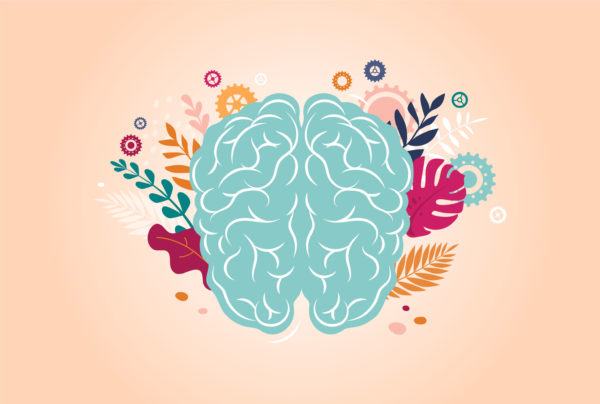
We get this question a lot. So why does well-being matter and how are we measuring it?
Researchers, including those at our Center, continue to investigate the factors that shape well-being. Rather than pitching a fixed scientific definition of well-being, we’re constantly unearthing clues and evidence about how well-being manifests itself in the mind and body. It’s not a static "thing" – but a set of skills that can be learned and cultivated over time, just like learning to play a musical instrument or riding a bike.
Center for Healthy Minds researchers explored the “how” of emotional well-being in a new paper in the journal The Proceedings of the National Academy of Sciences (PNAS). Read more about this study here.
Based on decades of research, we’ve identified four areas that contribute to well-being that are trainable and measurable in the lab: awareness, connection, insight and purpose.
Let's take a deep dive into the four pillars of well-being. Our friends at Healthy Minds Innovations, the external nonprofit affiliated with the Center, also share practices below on promoting your well-being.

What it is:
A heightened, flexible attentiveness to your environment and internal cues such as bodily sensations, thoughts and feelings. Training in awareness during meditation practices can increase what’s called “meta-awareness” or being aware of what is happening in your mind.
What it looks like:
Noticing thoughts, feelings, sensations as they arise - commonly called mindfulness
Catching yourself from being distracted or in auto-pilot mode while doing daily tasks like cleaning or driving
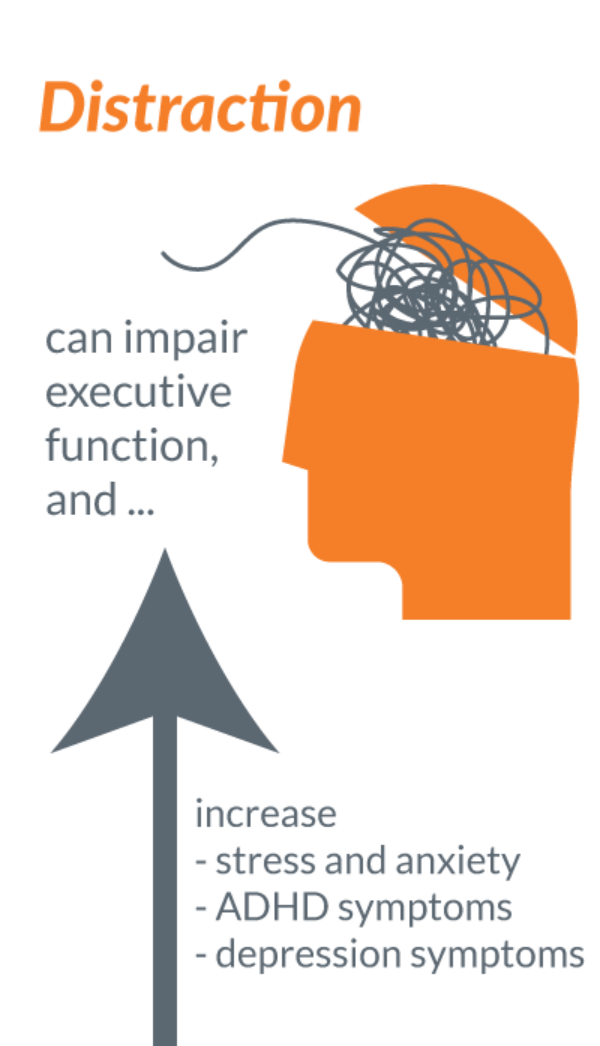
The Science:
People with higher levels of awareness have higher levels of well-being and positive emotions.
Distraction, the main detractor from awareness, can impair executive function 21 as well as increase stress and anxiety 22, ADHD symptoms 23, and depression 24.
Some studies show that distraction and the effects of perceived stress can harm our health and produce stress responses in the body related to inflammation and aging.
Bringing awareness to one’s thoughts recruits lateral regions of the prefrontal cortex that form part of the brain’s central-executive network 30.

Practice:
Close your eyes and take 10 intentional breaths, counting each silently and noticing how each inhale and exhale feels in your body. What do you notice? Whatever arises is fine. It’s the noticing that matters. Want a guided practice? Try the Tour of the Senses Seated 10 Minute practice from Healthy Minds Innovations

What it is:
A feeling of care and kinship toward other people, promoting supportive relationships and supportive interactions.
What it looks like:
Acknowledging people’s differences (like politics or points of view), and trying to understand that person’s unique perspective and acknowledge that just like you, they are worthy of dignity and respect as a fellow human being.
Showing appreciation to people in your life by acknowledging them and sharing why you’re grateful for them.
Focusing on a shared characteristic when you meet someone for the first time.
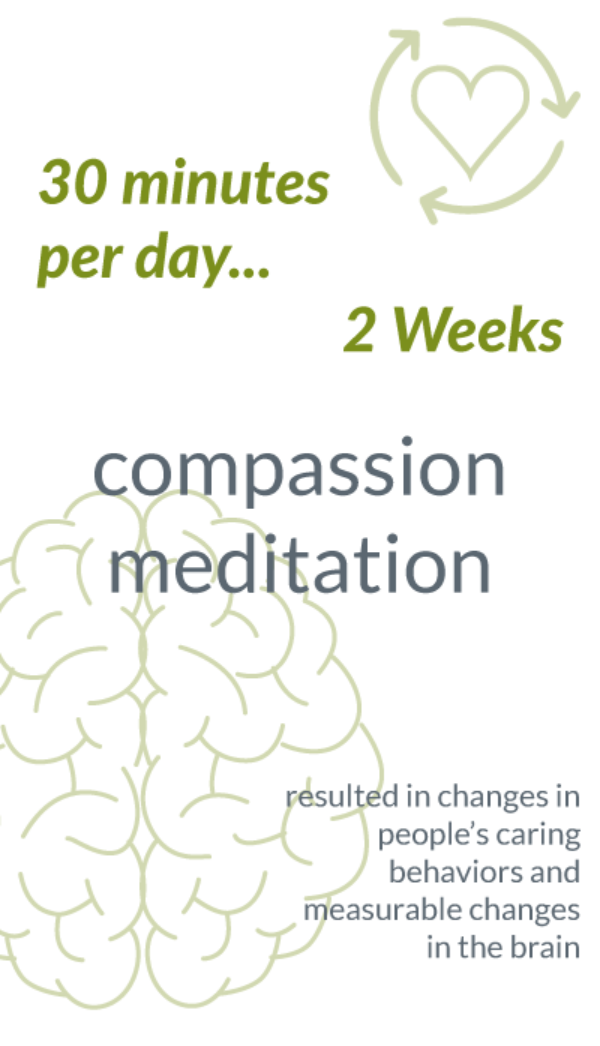
The Science:
Forming negative first impressions (or even neutral ones in some cases), can potentially lead to apathy, intergroup bias, and perceived social isolation 51.
Social relationships are better predictors of health than some biological and economic factors 52.
Making inferences about someone we perceive to be similar to ourselves activates the ventromedial prefrontal cortex 71, which is central to the perception of social safety and feelings of social connection.
One Center study has reported that just 30 minutes of compassion meditation training per day over the course of two weeks resulted in changes in people’s caring behaviors as well as resulted in measurable changes in the brain 87.

Practice:
Make a habit of noticing the positive in other people. You do this as a sitting meditation practice by bringing a close friend or family member to mind and noticing things you admire or appreciate about them. Recall situations where they expressed these qualities and then imagine expressing your appreciation. You can then extend this to people you don’t know very well and eventually even to people you find challenging. Then apply this skill in daily life by noticing the positive in the people you see and interact with and expressing your appreciation.
Try a guided practice! Listen to this Appreciation 10 Minute Seated Meditation from Healthy Minds Innovations.

What it is:
Self-knowledge concerning how our emotions, thoughts and beliefs shape our experiences and sense of self.
What it looks like:
Recognizing an anxious thought and being curious whether it’s coming from a fearful expectation or self-criticism
Clarify and challenge “unchangeable” beliefs about yourself and people around you
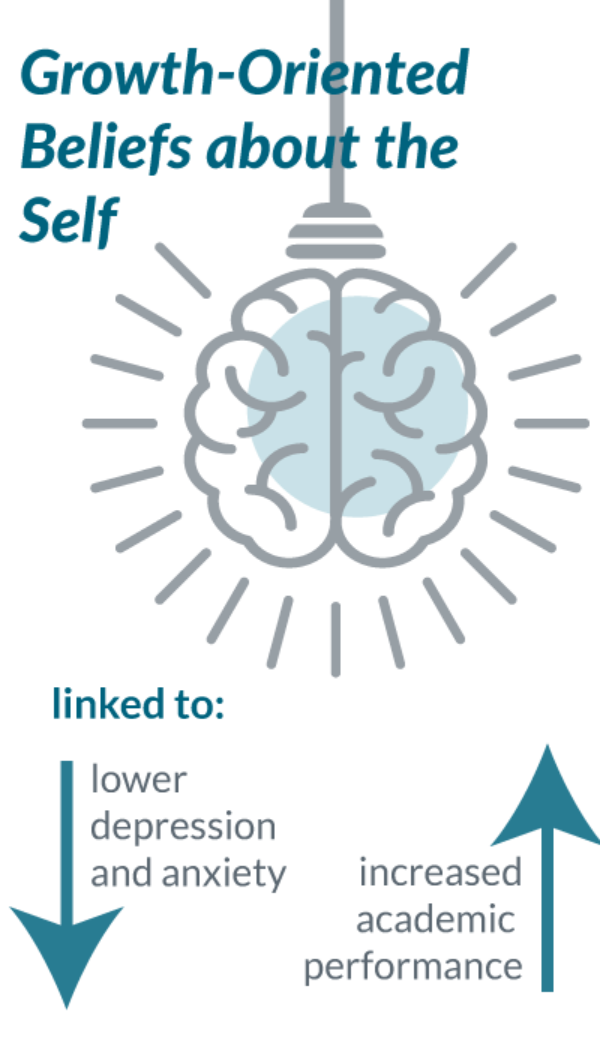
The Science
- Rigid and negative self beliefs can result in an increase in mental health disorders, while accepting and growth-oriented beliefs about the self are linked to lower levels of depression and anxiety and even things like improved academic performance 7, 93, 94, 95
- Scientific studies of the self suggest that there does not appear to be a single, unitary network associated with insight in the brain 108
- Meditators with significant experience who have done insight-related deconstructive meditation appear to show enduring changes in self-related processing in the brain 120

Practice:
If you've ever found yourself already in a bad mood before even joining a meeting, that's a moment for insight. You can question your assumptions, and notice them.
Want to try a guided practice? Listen to Deconstructing Inner Experience from Healthy Minds Innovations

What it is:
Being clear about your core values and deeper motivation and being able to apply them in your daily life.
What it looks like:
Being able to link mundane activities with a meaningful value or motivation, such as doing the dishes as an act of generosity for the people you live with
Viewing challenges and setbacks as opportunities to learn and grow, including strengthening your connection to meaningful values and goals
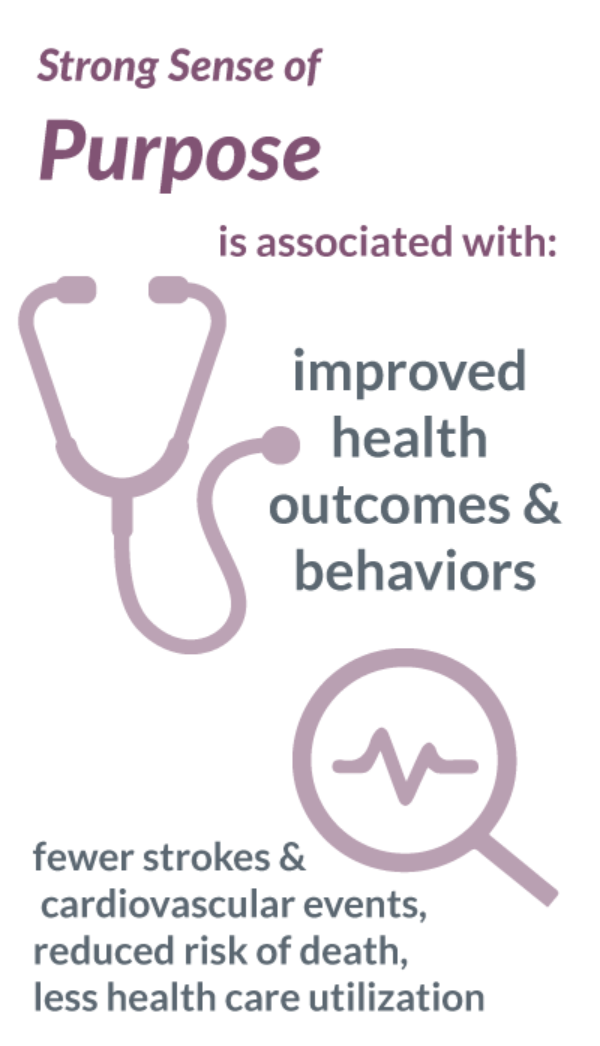
The Science:
A strong sense of purpose is associated with improved health outcomes and behaviors, including increased physical activity 133, decreased incidence of stroke 134, fewer cardiovascular events 135, reduced risk of death 136, lower health care utilization 137 , and even better financial health 138.
In a sample of African Americans at high-risk for psychiatric disorders, purpose in life emerged as a key factor predicting resilience and recovery from traumatic events 143.
A pioneering study found people who prioritized more transcendent values (those that extend beyond themselves) had different activity in the left and right amygdala and left anterior insula 155, suggesting more transcendent values may reduce defensiveness and promote openness.

Practice:
In moments of hardship (like many people around the world are experiencing this year with the pandemic), identify what is most meaningful to you. For some whose aspirations might be to create a kinder world, how can you find actionable ways to be kind in this moment?
Guided practice: Purpose Practice: Core Values from Healthy Minds Innovations
References noted on this page can be found in the paper published in The Proceedings of the National Academy of Sciences (PNAS).

